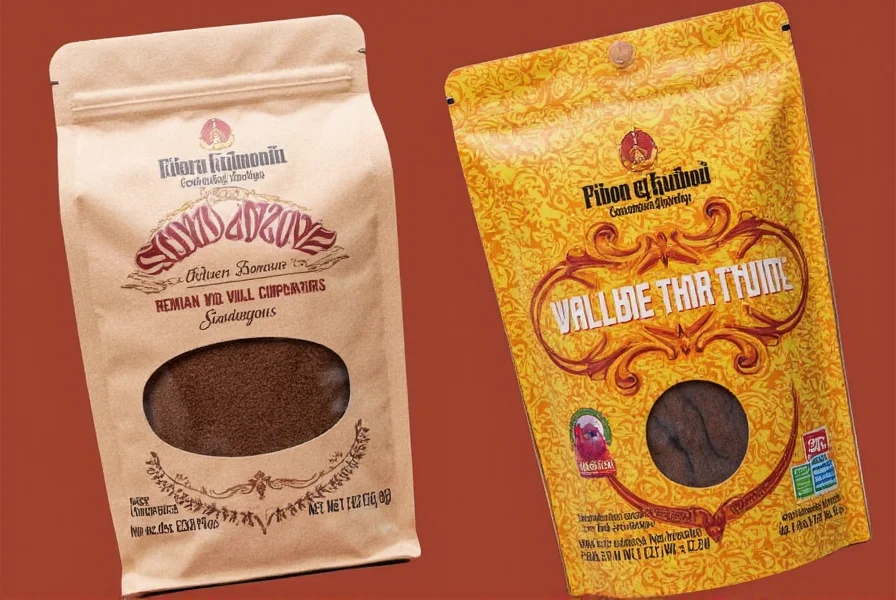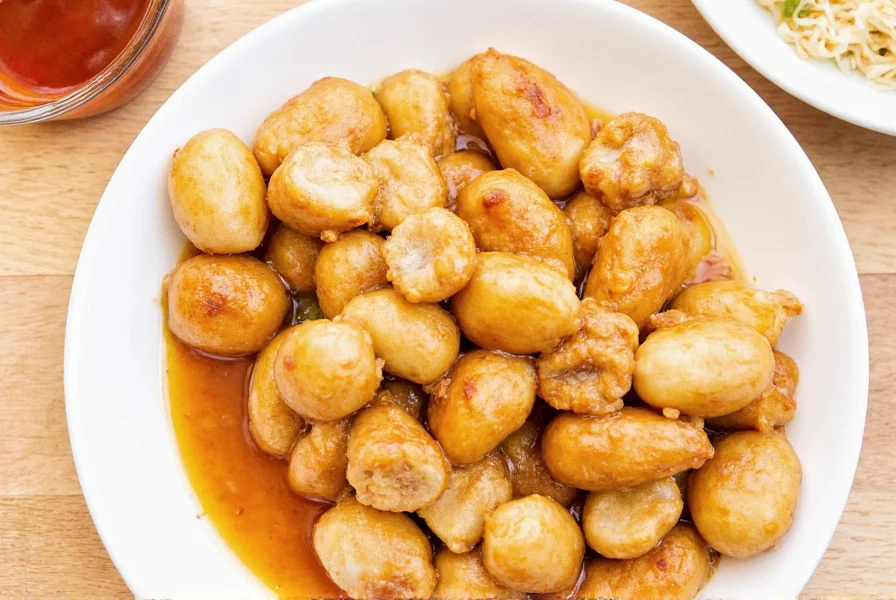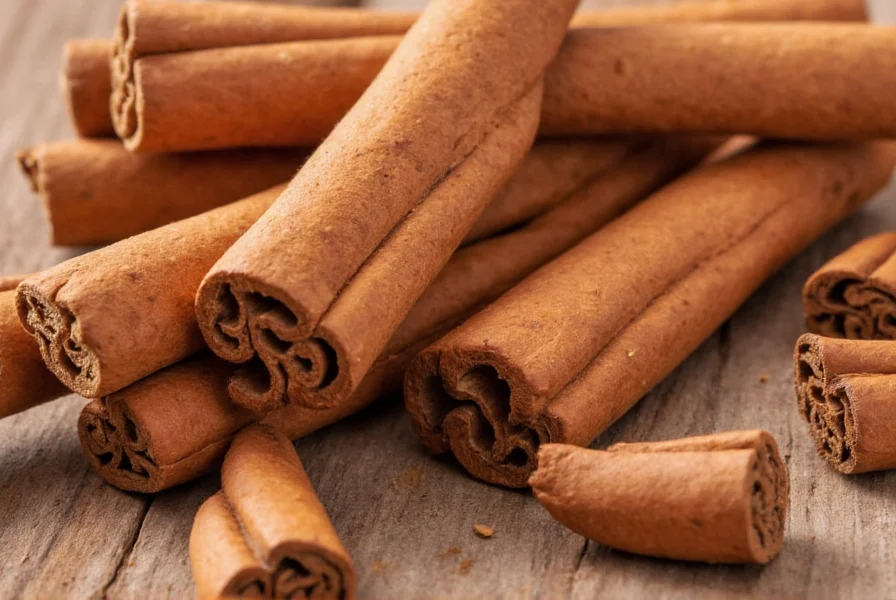Table of Contents
What is Ceylon Cinnamon?
Ceylon cinnamon (Cinnamomum zeylanicum), also known as true cinnamon, is a premium spice native to Sri Lanka prized for its delicate flavor, low coumarin content, and numerous health benefits. Unlike common cassia cinnamon, Ceylon cinnamon is safer for regular consumption and enhances both sweet and savory dishes with its subtle sweetness.



Key Differences Between Ceylon and Cassia Cinnamon
Many people confuse Ceylon cinnamon with cassia, but there are key differences that impact flavor, safety, and culinary use:
| Feature | Ceylon Cinnamon | Cassia Cinnamon |
|---|---|---|
| Flavor | Sweet, delicate, and subtle | Bold, spicy, and slightly bitter |
| Texture | Thin, soft, and papery | Thick, hard, and woody |
| Color | Light brown | Darker red-brown |
| Coumarin Content | Low (0.017g/kg) | High (up to 6.97g/kg) |
| Best For | Delicate dishes, health-conscious users | Strong-flavored recipes, general use |
Practical Tips for Using Ceylon Cinnamon
Whether you're baking, brewing, or cooking, here are practical tips to maximize Ceylon cinnamon's benefits:
- Use it in moderation: A little goes a long way. Add just a pinch to coffee, tea, or desserts for warmth and sweetness.
- Grind it fresh: For peak flavor, grind whole sticks using a mortar and pestle or spice grinder before use.
- Pair it wisely: Complements apples, bananas, nuts, and chocolate. Perfect for oatmeal, yogurt, muffins, and cookies.
- Make a cinnamon infusion: Steep a stick in hot water or milk for a comforting drink. Add honey or vanilla for extra flavor.
- Use it in savory dishes: Enhances meat rubs, stews, and roasted vegetables with unique depth.
How to Buy Authentic Ceylon Cinnamon
When shopping for true cinnamon, look for these key indicators:
Key Features to Look For
- Appearance: Thin, multi-layered sticks resembling rolled paper (not thick, rigid bark).
- Smell: Warm, sweet, floral aroma (avoid harsh or overly strong scents).
- Origin: Labeled "Ceylon cinnamon," "True cinnamon," or "Cinnamomum zeylanicum" (Sri Lankan origin).
- Source: Reputable spice specialists or specialty stores known for quality.
Recommended Products
- Organic Ceylon Cinnamon Sticks – Ideal for grinding at home. Perfect for baking, coffee, and tea.
- Ground Ceylon Cinnamon – Convenient for smoothies, oatmeal, and desserts. Available in small, airtight containers.
- Ceylon Cinnamon Oil – Great for aromatherapy or concentrated flavor in recipes.
Who Should Use It?
Ceylon cinnamon is ideal for:
- Chefs and home cooks prioritizing flavor quality
- Health-conscious individuals concerned about coumarin intake
- Those seeking natural remedies and holistic wellness
- Anyone wanting to elevate meals with refined, authentic spice
When to Use It
- Breakfast: Sprinkle on oatmeal, yogurt, or toast for a warm start.
- Snacks: Add to banana bread, apple pie, or granola for extra flavor.
- Drinks: Brew into coffee, chai, or herbal teas for soothing spiced beverages.
- Savory Dishes: Use in meat rubs, stews, or roasted vegetables for complex depth.
Frequently Asked Questions About Ceylon Cinnamon
What is Ceylon Cinnamon?
Ceylon cinnamon (Cinnamomum zeylanicum), also known as true cinnamon, is a specific cinnamon species native to Sri Lanka. It's made from the inner bark of the tree, producing thin, fragile quills with a delicate flavor and significantly lower coumarin content than cassia cinnamon. This makes it the safer choice for regular consumption.
How can I tell if I'm buying real Ceylon cinnamon?
Look for thin, multi-layered sticks resembling rolled paper (not single thick pieces), light tan to medium brown color, and a sweet floral aroma. Check labels for "Ceylon cinnamon," "True cinnamon," or "Cinnamomum zeylanicum." Avoid products labeled simply "cinnamon," as these are typically cassia. Premium Ceylon cinnamon has fragile, paper-thin quills.
Why is Ceylon cinnamon considered healthier than other types?
Ceylon cinnamon contains only 0.017g of coumarin per kg, compared to cassia's up to 6.97g per kg. Coumarin can cause liver damage in high doses over time. Health authorities recommend Ceylon cinnamon for regular use, especially for children, pregnant women, and those with liver conditions. It also contains higher concentrations of beneficial compounds like cinnamaldehyde for antioxidant benefits.
How much Ceylon cinnamon should I consume daily?
Most health experts recommend 0.5-2 grams (1/4 to 1/2 teaspoon) daily for general benefits. Due to its low coumarin content, you can safely consume up to 1 teaspoon daily without health risks. For medicinal use or specific health conditions, consult a healthcare provider for personalized guidance.
Can I substitute Ceylon cinnamon for cassia in recipes?
Yes, but adjust quantities. Ceylon cinnamon has a milder flavor, so use 25-50% more for similar intensity. It's ideal for delicate dishes like custards, creams, and light baked goods where it won't overpower flavors. For robust recipes like chili or mulled wine, cassia's stronger profile may be preferred.
How should I store Ceylon cinnamon to maintain freshness?
Store in an airtight container away from heat, light, and moisture. Whole sticks retain potency for 3-4 years; ground cinnamon lasts 6-12 months. For maximum flavor, keep sticks whole until needed, then grind fresh. Avoid storing near strong-smelling spices as cinnamon absorbs odors. Refrigeration isn't required but helps in humid climates.
Conclusion: Choose the True Cinnamon
While many cinnamon varieties exist, Ceylon cinnamon stands out for its superior taste, safety profile, and versatility. Whether you're a chef or home cook, choosing authentic Ceylon cinnamon elevates your culinary creations while supporting long-term health.
Remember: The difference between true cinnamon and cassia isn't just in the name—it's in the experience. Next time you reach for cinnamon, verify the label. Your palate and well-being will thank you.











 浙公网安备
33010002000092号
浙公网安备
33010002000092号 浙B2-20120091-4
浙B2-20120091-4